Turtle Lake: Saigon’s Iconic Meeting Point of History and Culture
When exploring Saigon’s culture and history with Saigon Taste Tours, one stop that captures both architectural uniqueness and nostalgic stories is Turtle Lake (Hồ Con Rùa). Located at the heart of District 3, this landmark is not only a popular meeting point but also a witness to centuries of change in Ho Chi Minh City.
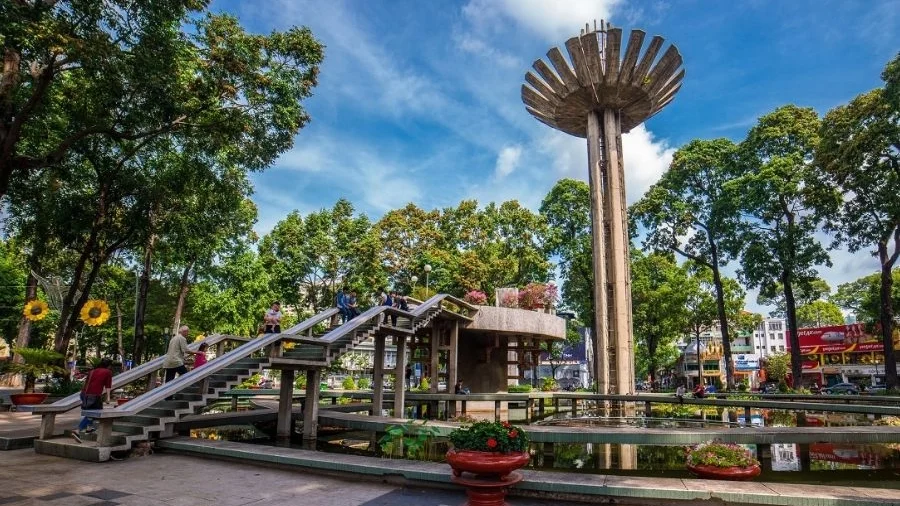
The History of Turtle Lake
In 1790, this location was first marked by the Kham Khuyet Gate of the Bat Quai citadel, a massive star-shaped fortress commissioned by King Gia Long as part of his defensive strategy for Gia Định (Saigon).
The citadel played a crucial role in protecting the city, but after the Lê Văn Khôi rebellion (1833–1835), King Minh Mạng ordered its demolition and replaced it with the smaller Gia Định citadel, reflecting both political caution and military practicality. Over the next decades, the area transitioned from a strategic military stronghold into an urban hub. By 1878, under French colonial rule, a large water tower was erected on the site to meet the growing demand for clean water in Saigon.
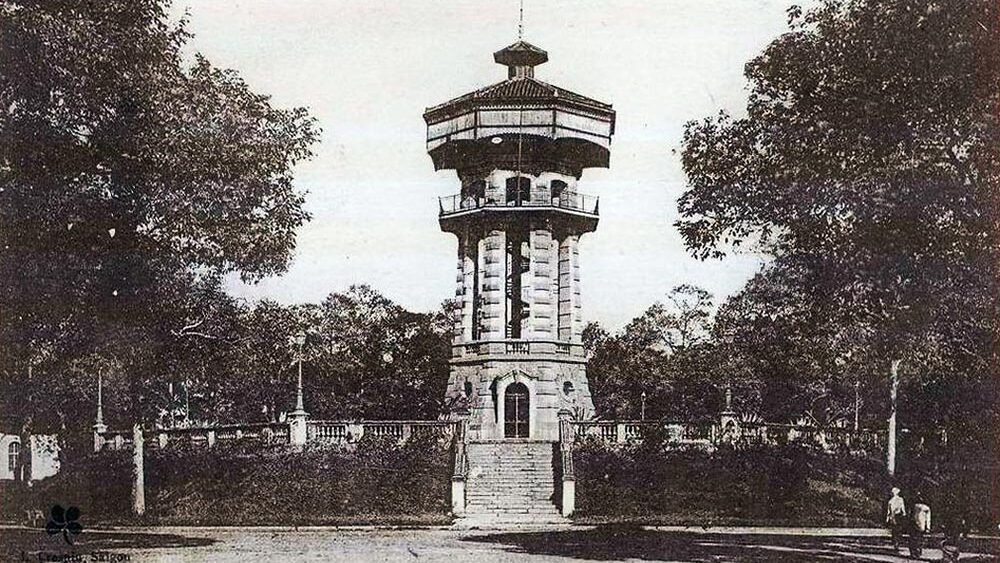
The tower not only served a practical purpose but also stood as a symbol of French urban planning and modernization. However, in 1921, the tower was dismantled, and the space was redesigned, with new roads extended to connect major streets, giving birth to the busy intersection recognizable today.
The French later erected a bronze statue of three soldiers with a small lake, symbolizing their domination of Indochina. Locals called it Three-Shaped Square. In 1956, these monuments were removed, but the small lake remained, and the area was renamed Soldier Square.
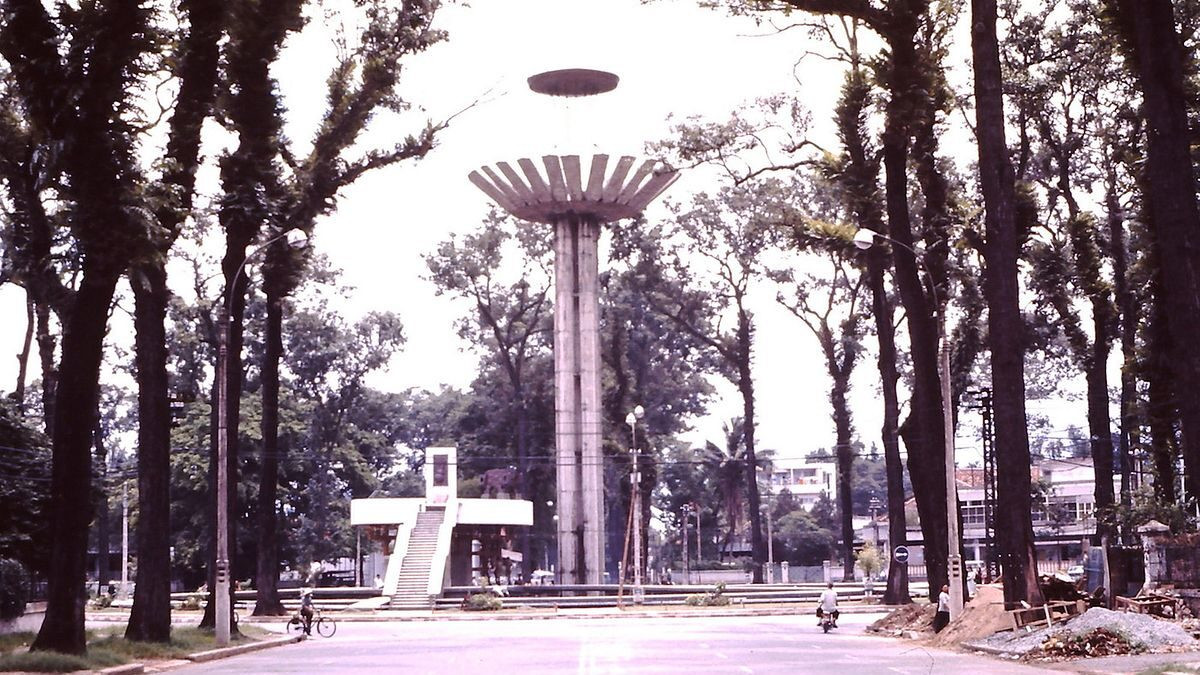
Between 1965 and 1967, the construction of Turtle Lake began under the design of Vietnamese architect Nguyen Ky, transforming the old square into a modern landmark with a circular layout and central fountain. In the following years, from 1970 to 1974, the site underwent significant renovations, including the addition of its most distinctive feature—five towering concrete columns shaped like open petals, symbolizing a flower in bloom and creating the striking architectural identity still seen today.
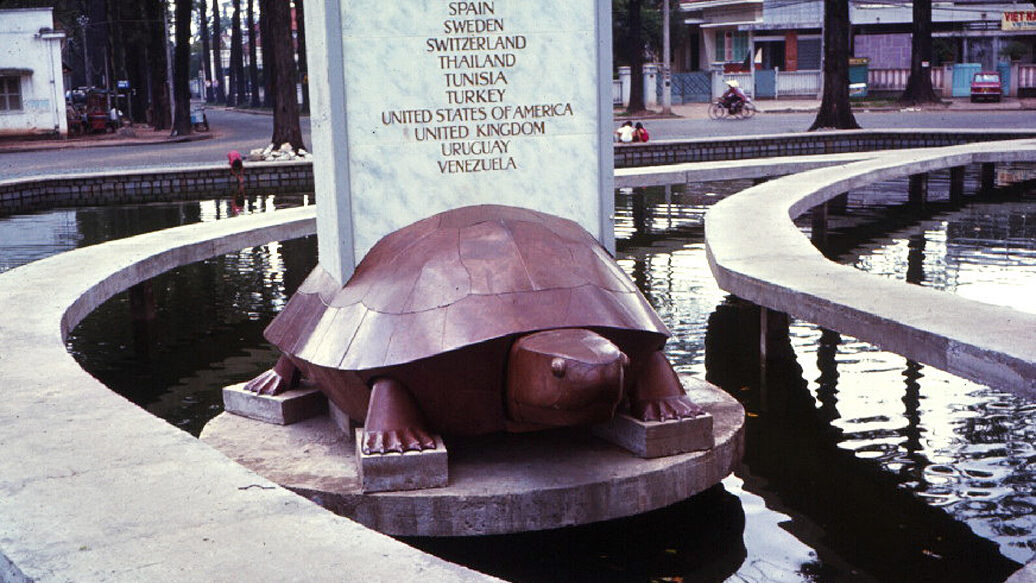
By 1972, the intersection was officially renamed International Square, reflecting the Republic of Vietnam’s aspirations for global recognition. However, in 1976, an explosion destroyed the stele and the turtle statue that once stood at the center, leaving only the fountain and walkways. Despite this loss, the nickname “Turtle Lake” endured among locals, preserving the site’s cultural memory and reinforcing its role as one of Saigon’s most iconic meeting points.
The Unique Architecture of Turtle Lake
The modern design of Turtle Lake in Ho Chi Minh City features a striking combination of traditional symbolism and contemporary structure. At its heart lies a large octagonal fountain, surrounded by lush greenery and a traffic roundabout nearly 100 meters in diameter. From the edges of the lake, four spiral walkways extend toward the central area, creating the impression of floating paths that guide visitors directly to the middle. Originally, the centerpiece was marked by a bronze turtle statue carrying a large stone stele on its back, which gave rise to the popular name Turtle Lake among Saigon residents.
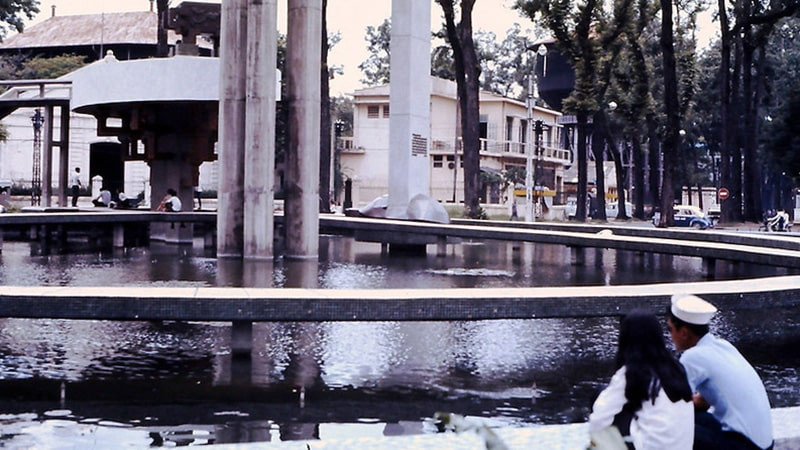
Adding to its distinctive identity are five tall concrete columns, designed in the shape of open petals supporting a central pistil. These columns are not just structural elements but also carry symbolic meaning, often interpreted as the “five hands receiving support” or a blooming lotus—a national symbol of Vietnam. The combination of the fountain, spiral pathways, and unique columns makes Turtle Lake one of the most unusual yet fascinating pieces of urban architecture in the city.
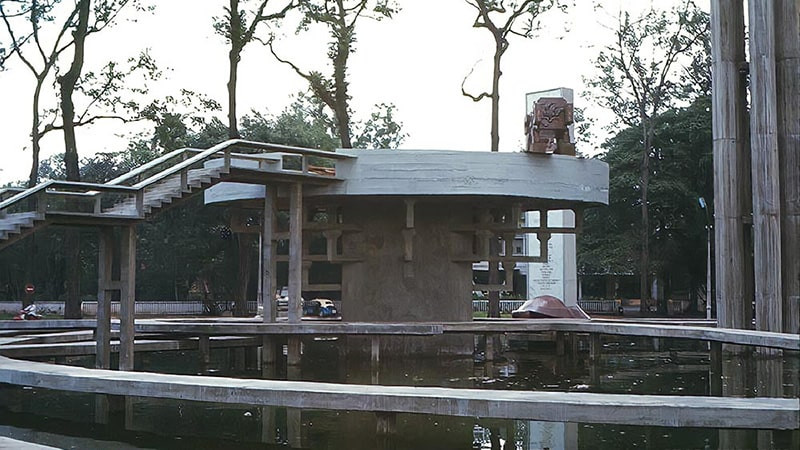
Due to its unconventional design, Turtle Lake has also been associated with intriguing legends. According to author Huỳnh Bá Thành in his book The Case of Turtle Lake (Tuổi Trẻ Publishing House, 1982), local oral tradition tells that in 1967, when General Nguyễn Văn Thiệu became President of the Republic of Vietnam, he invited a famous Chinese feng shui master to study the land around the Independence Palace. Some believe the construction of Turtle Lake was part of a strategy to suppress the city’s dragon vein for political and spiritual control. While this legend cannot be verified, it continues to add mystery and cultural depth to Turtle Lake’s story, making it a landmark where history, architecture, and folklore intersect.
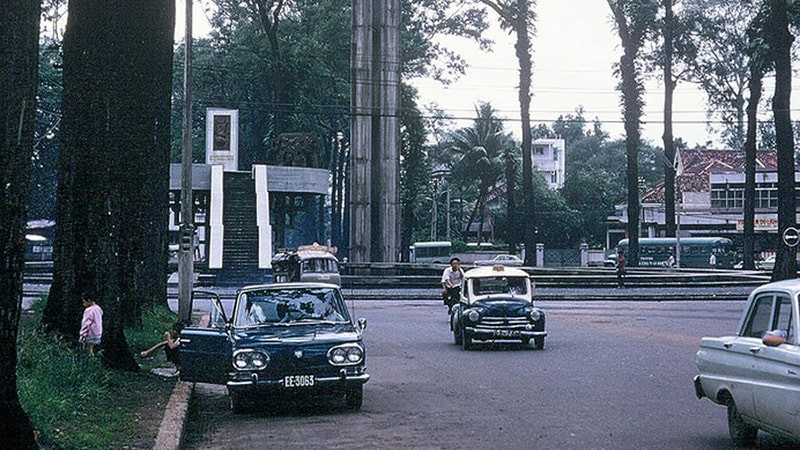
Things to Do at Turtle Lake
Admire the Unique Design
Standing at Turtle Lake, visitors can marvel at its unusual architecture. The central fountain is framed by five towering columns, resembling a giant flower. Spiral walkways extend into the water, creating the impression of floating paths that connect the outer edge to the heart of the lake.
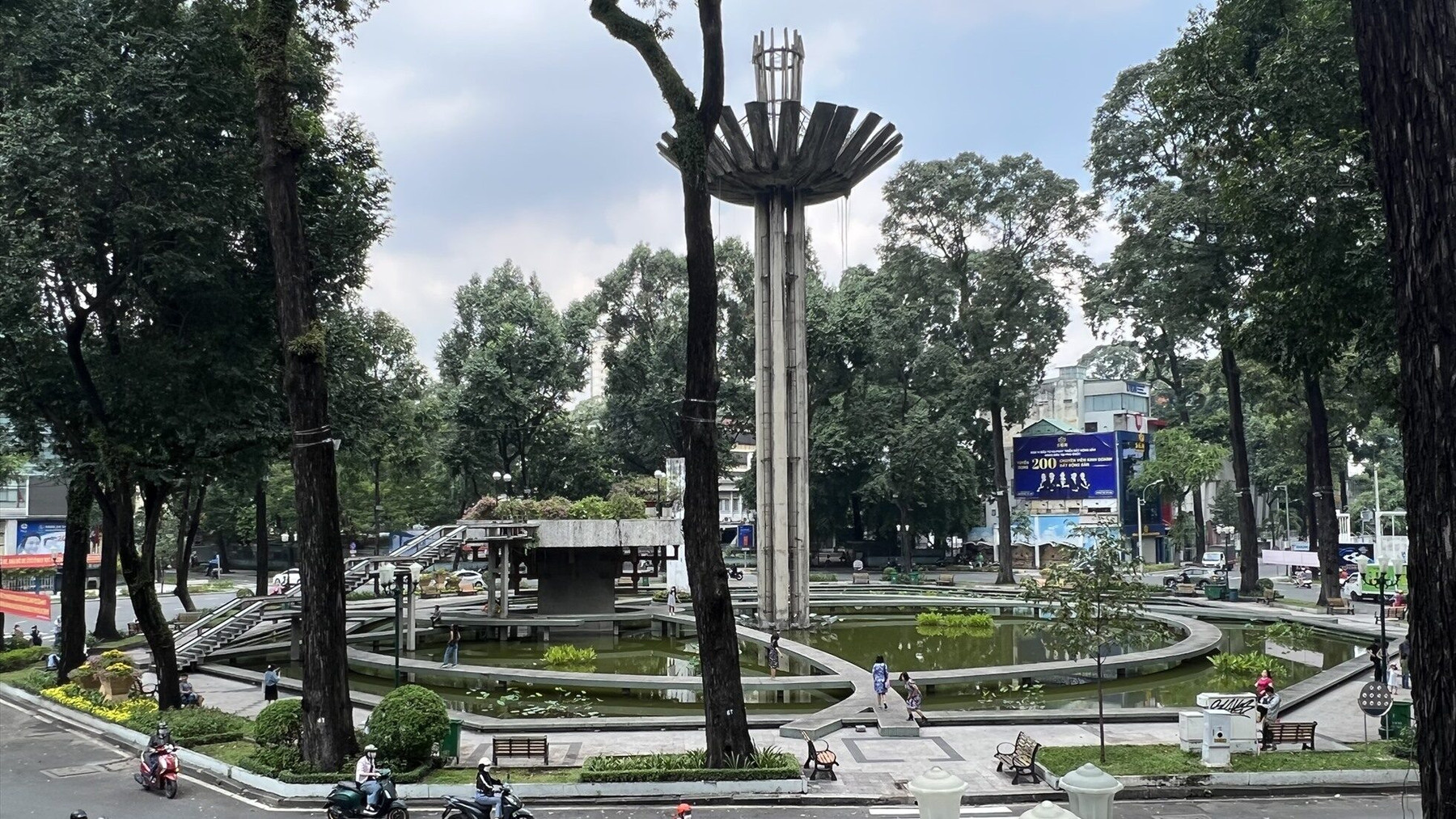
Enjoy Saigon Street Food by the Lake
Turtle Lake is a famous spot for street food lovers. Visitors can sit on the stone walkways or simply gather with friends to enjoy local favorites such as:
- Bánh tráng nướng (Vietnamese grilled rice paper)
- Bánh tráng trộn (rice paper salad)
- Cá viên chiên (fried fish balls)
- Xoài lắc (shaken mango)
- Hồ lô nướng (grilled sausages)
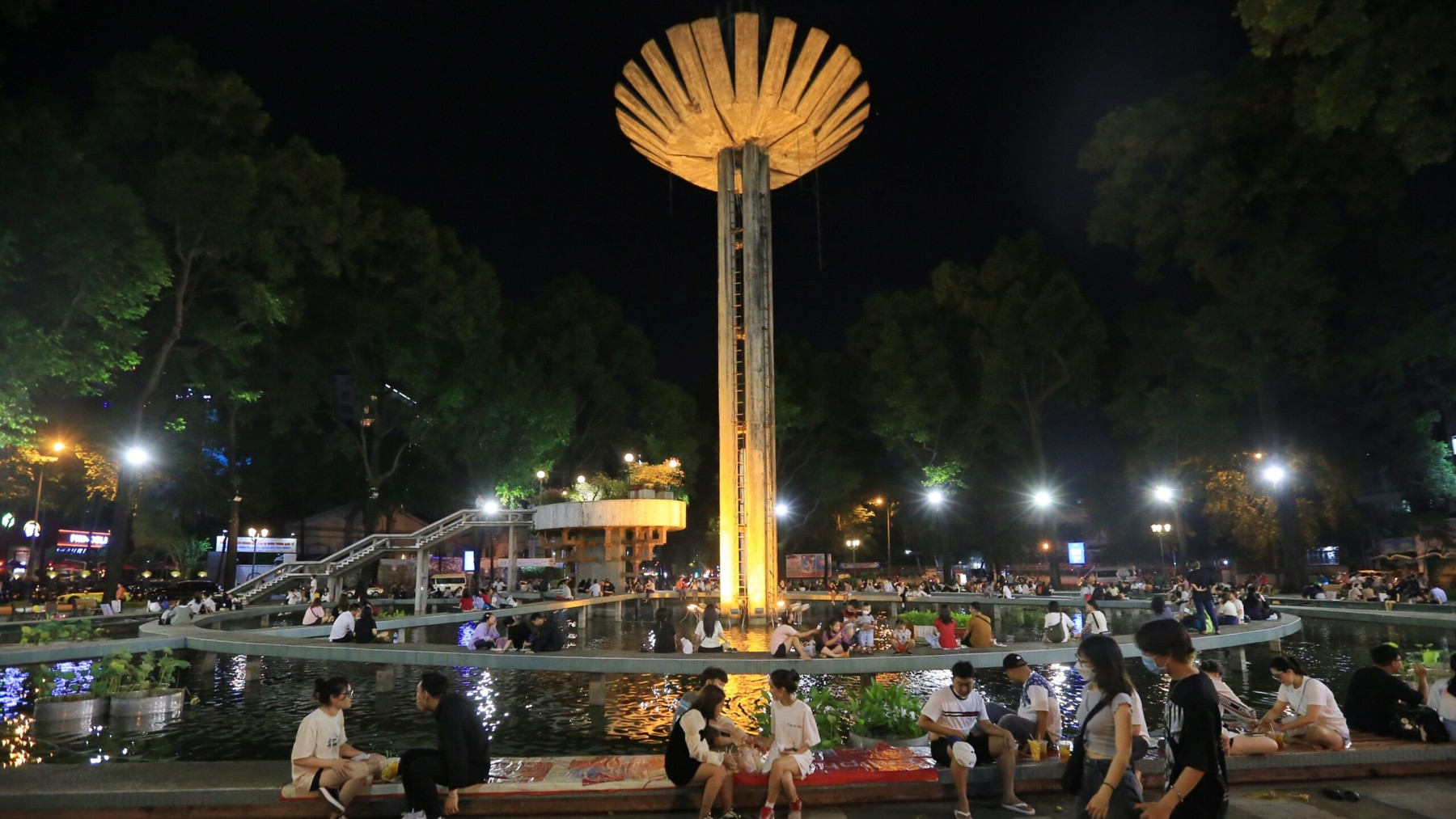
Prices usually range from 20,000–30,000 VND, making it an affordable and authentic Saigon experience.
Capture Instagram-Worthy Photos
For photography enthusiasts, Turtle Lake offers numerous check-in spots. The central fountain, the octagonal layout, and the spiral pathways all provide a striking urban backdrop. Whether day or night, it’s one of the best places in Saigon to snap a memorable photo.
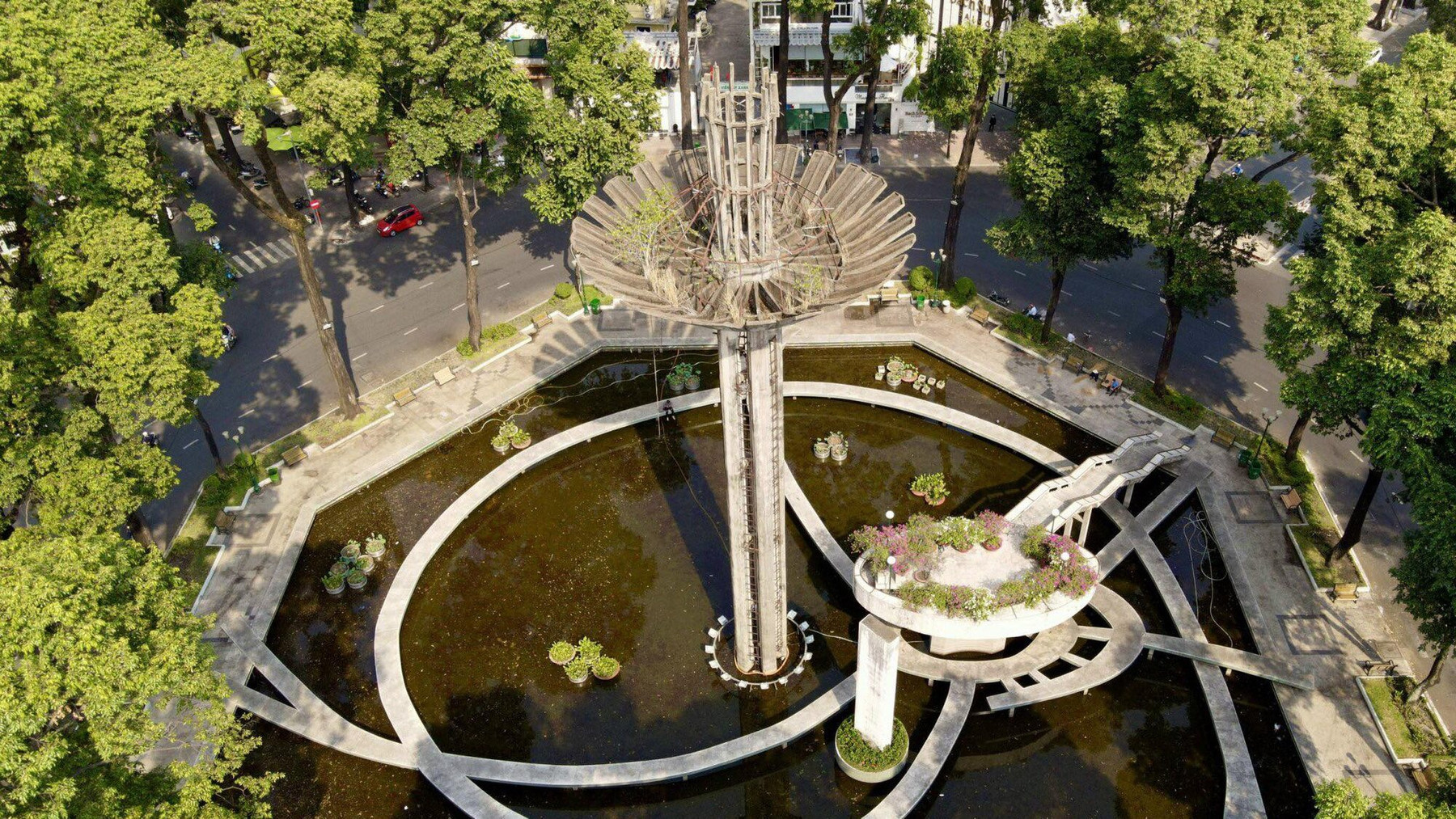
Useful Tips for Visiting Turtle Lake
To make your visit to Turtle Lake (Hồ Con Rùa) in Ho Chi Minh City more enjoyable, here are some helpful tips:
- How to get there: Turtle Lake is located at the intersection of Trần Cao Vân, Võ Văn Tần, and Phạm Ngọc Thạch streets in District 3. From the city center (Ben Thanh Market area), it’s only about a 5–10 minute drive by motorbike or taxi. You can also walk if you enjoy exploring Saigon’s streets. For public transport users, several bus routes pass by nearby stops on Võ Văn Tần and Phạm Ngọc Thạch.
- Best time to visit: The area is busiest in the evening, when street food vendors set up stalls and locals gather with friends. If you want to enjoy a quieter atmosphere for photography, come in the morning or early afternoon.
- Dress comfortably: Choose light and casual clothing suitable for walking, eating street food, or sitting by the lake.
- Keep your belongings safe: Like any busy public space, it’s important to watch over your bags, phones, and personal items.
- Protect the environment: Help keep Turtle Lake clean by disposing of trash in the proper bins so everyone can enjoy the area.
- Bring small cash: Most street food vendors around Turtle Lake only accept cash, so it’s handy to carry small denominations for quick purchases.
If you’re planning to uncover the cultural heartbeat of Ho Chi Minh City, make sure to include Turtle Lake in your journey. With Saigon Taste Tours, you’ll not only learn about its fascinating history but also experience the authentic flavors and atmosphere that make this landmark unforgettable.
Book a Once-in-a-Lifetime Experience with us
OUR EXPERIENCES
Ao Dai Motorbike Tours Cu Chi Tunnels Excursions Ho Chi Minh Day Trips, and Combos Mekong Delta Adventures Saigon: Culture & History Saigon Street Food Southern Vietnam Coastal Adventures Taste Of Saigon Tours
Don’t leave just yet—stay with us a bit more!
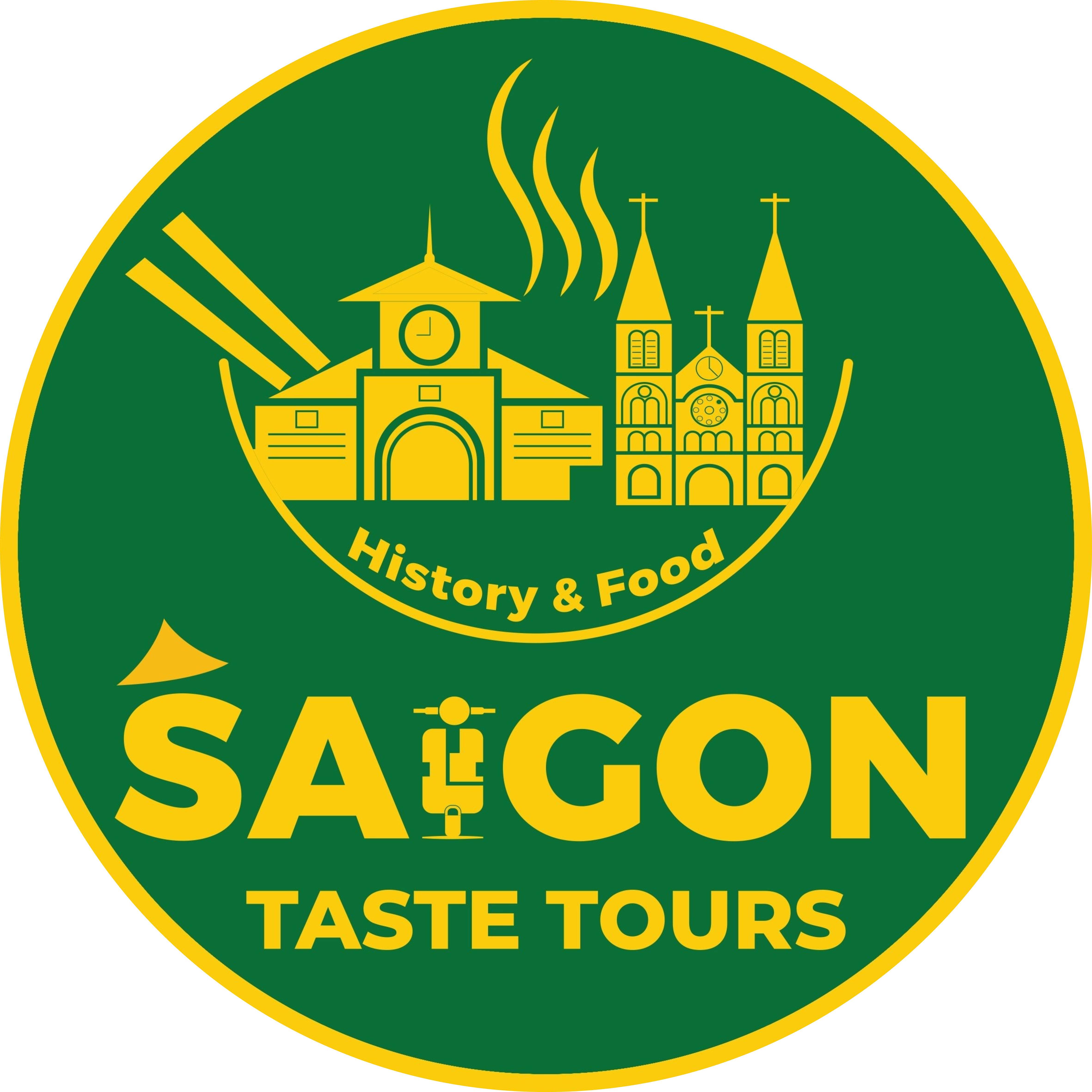


Leave a Reply